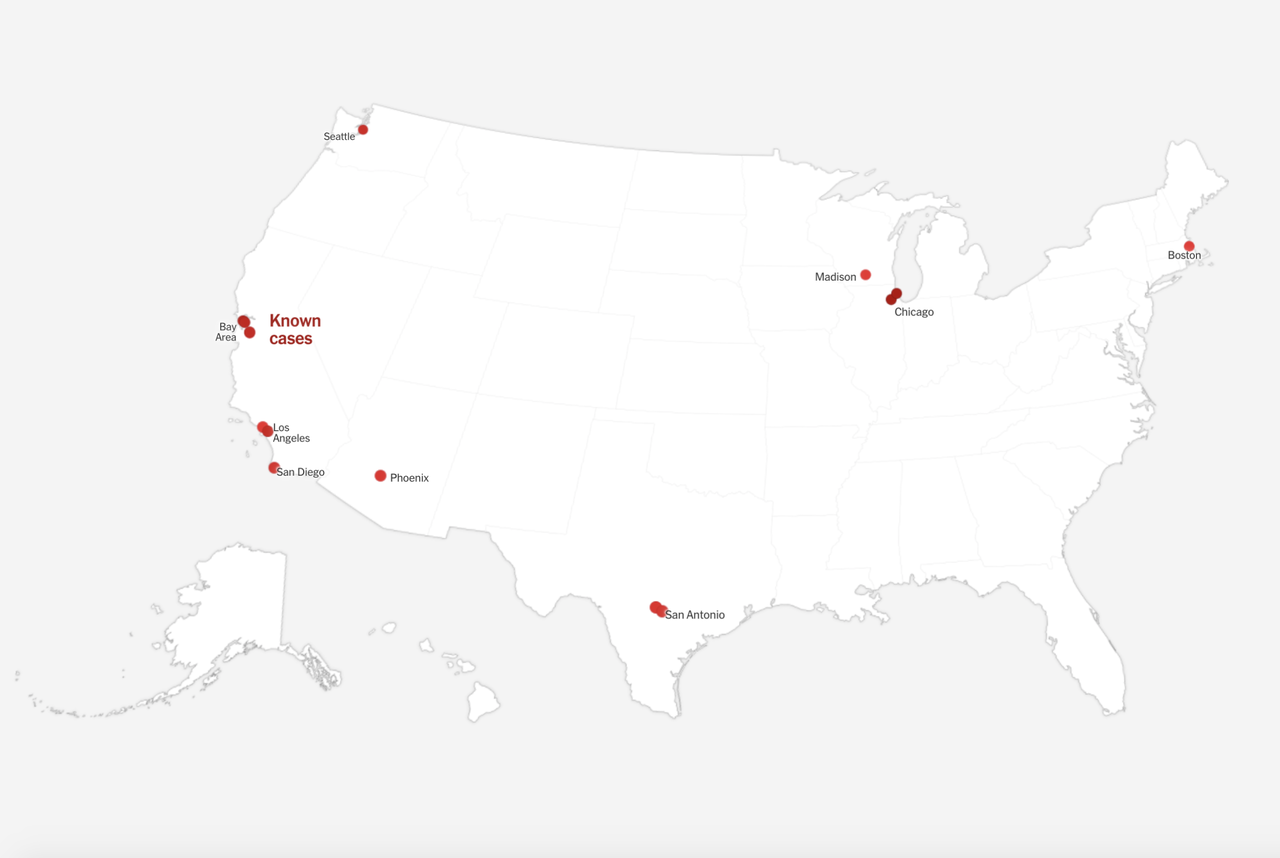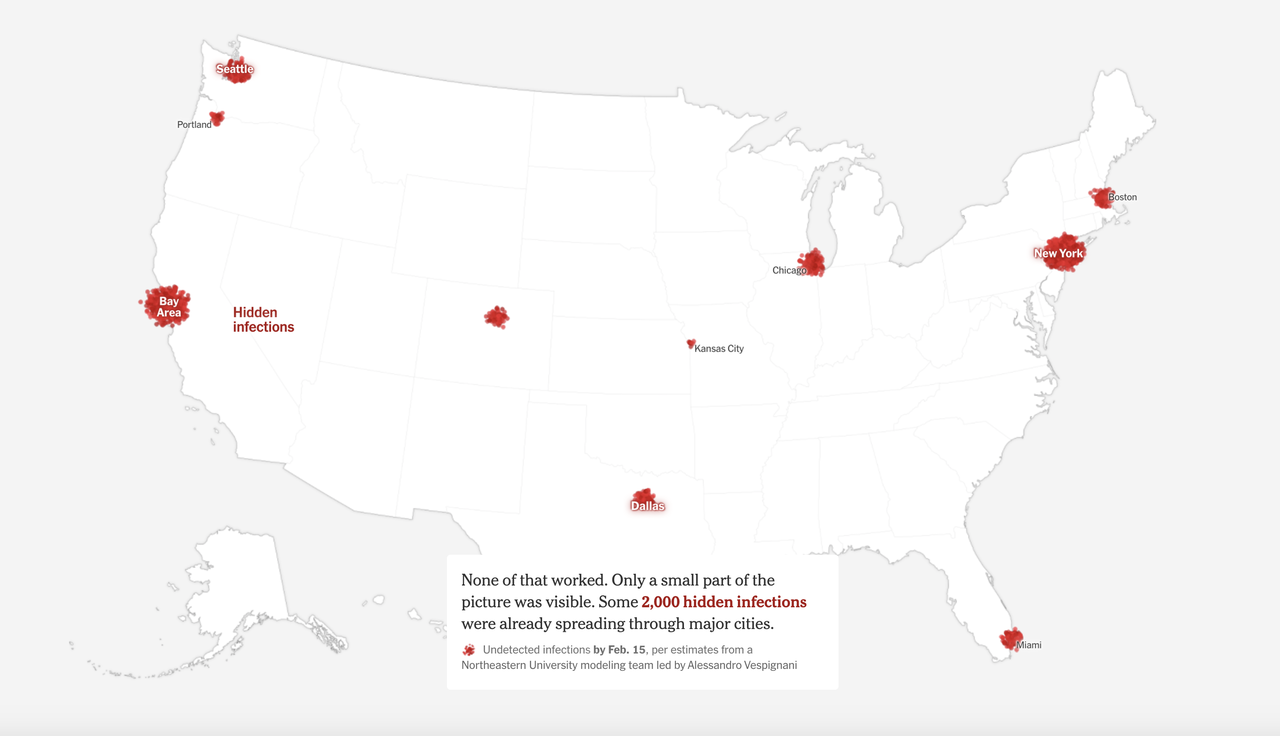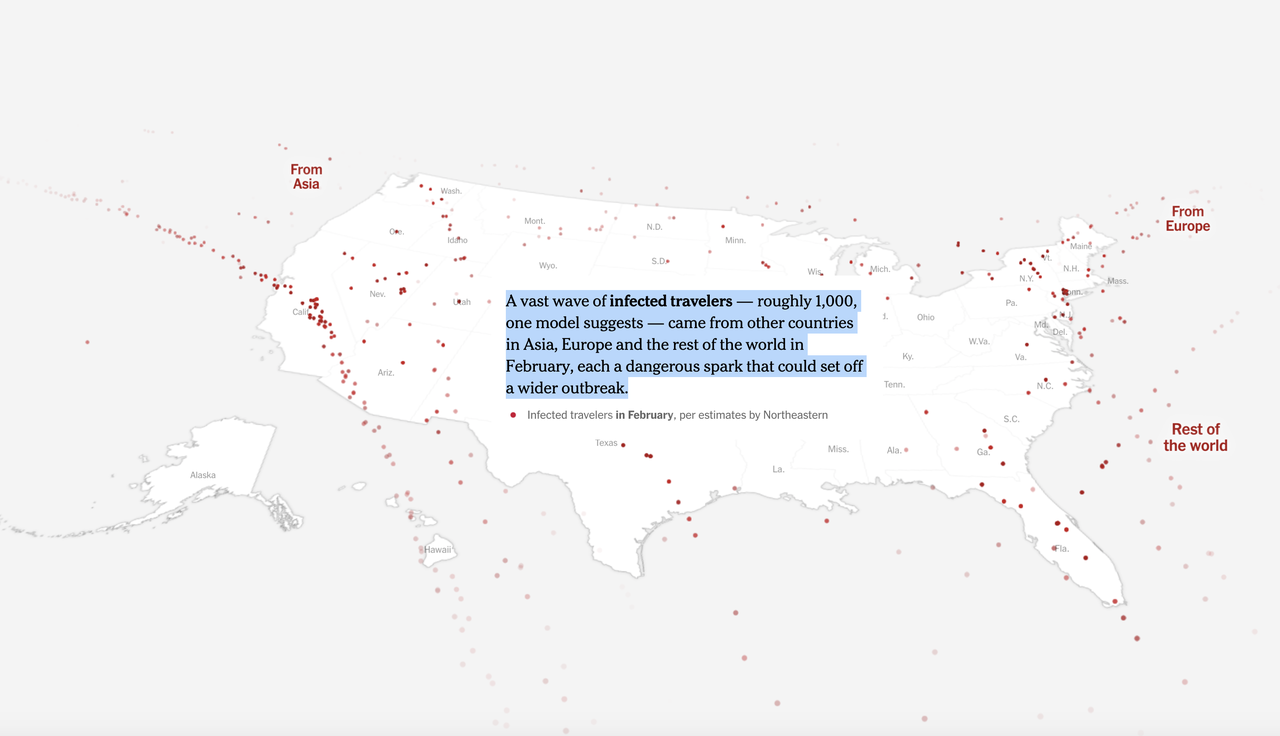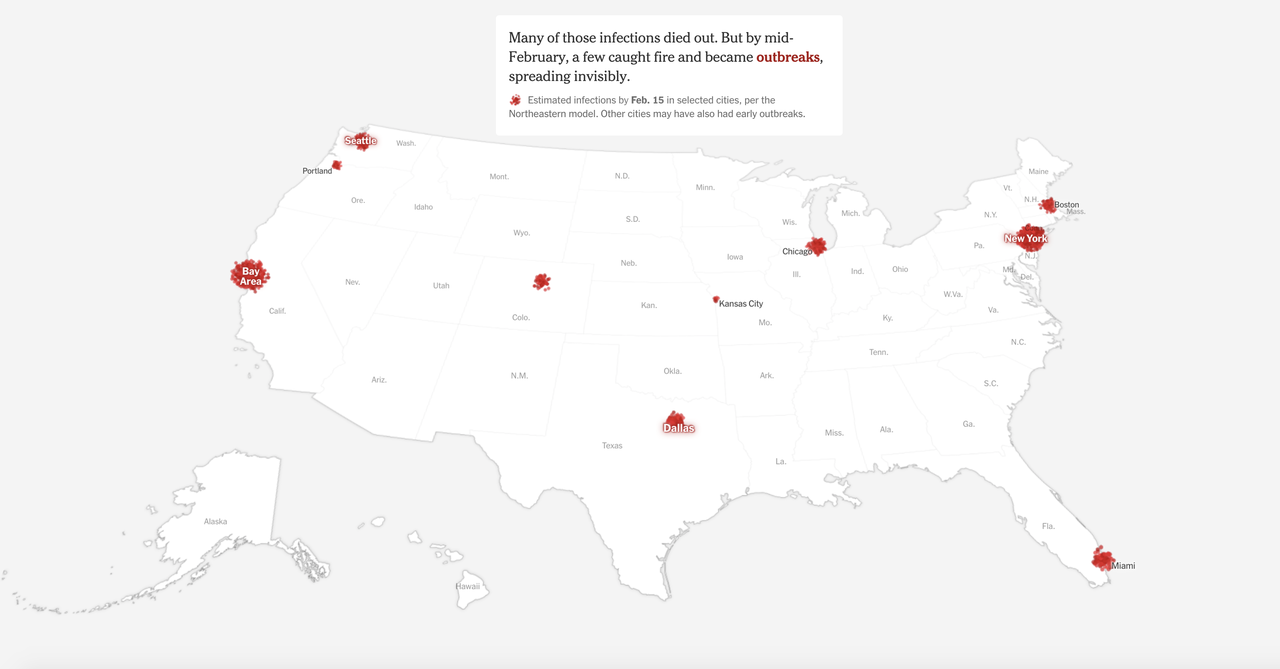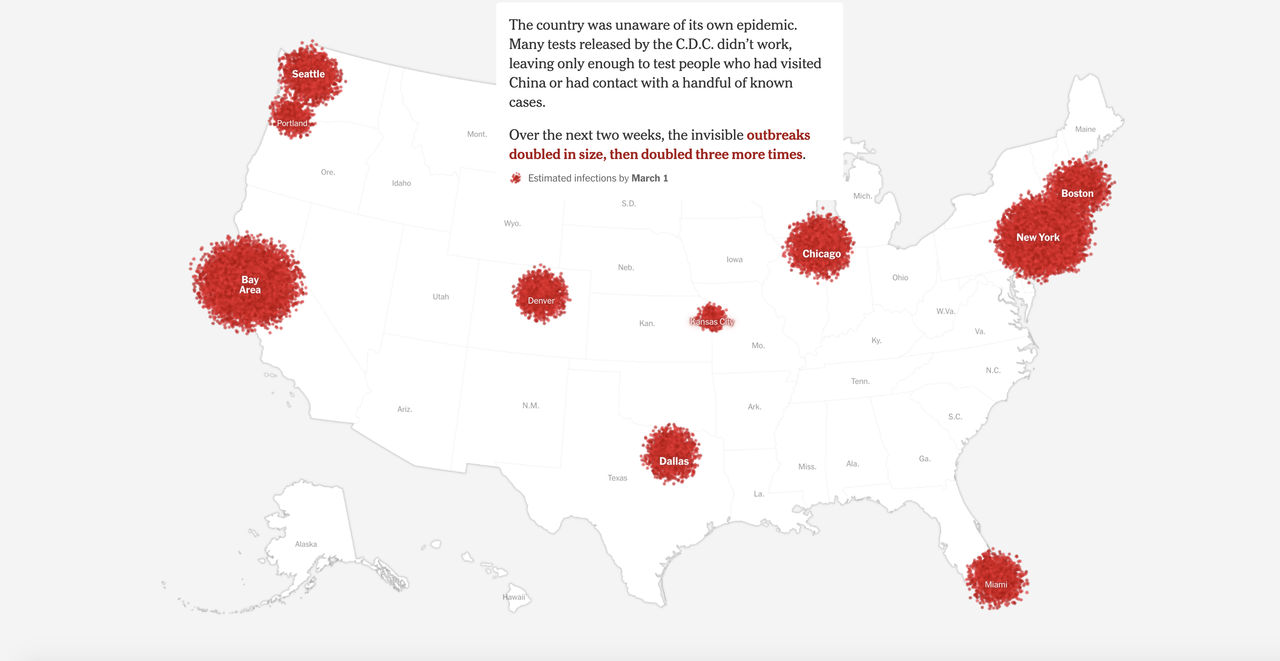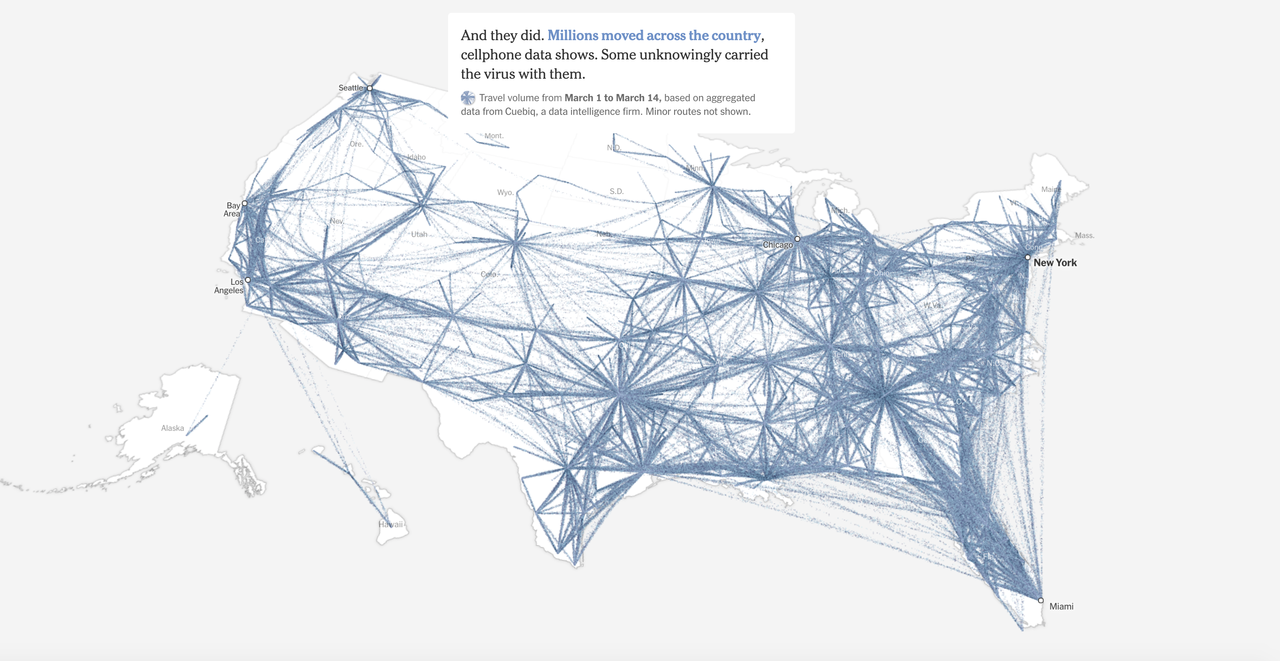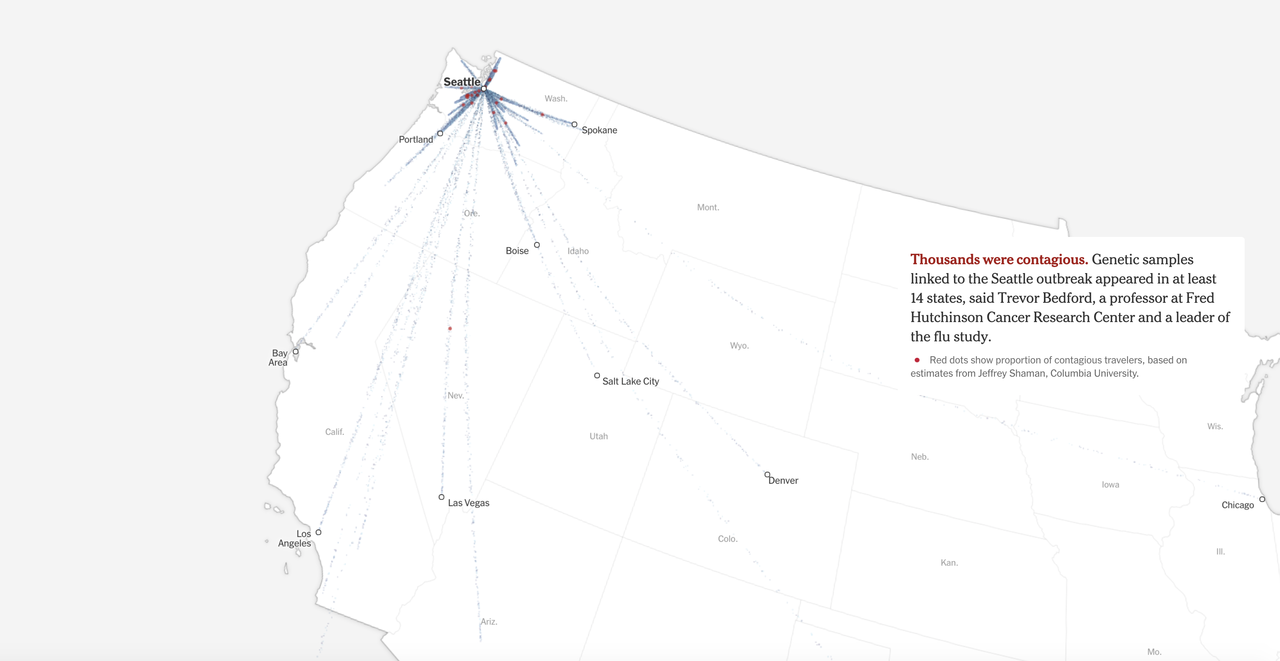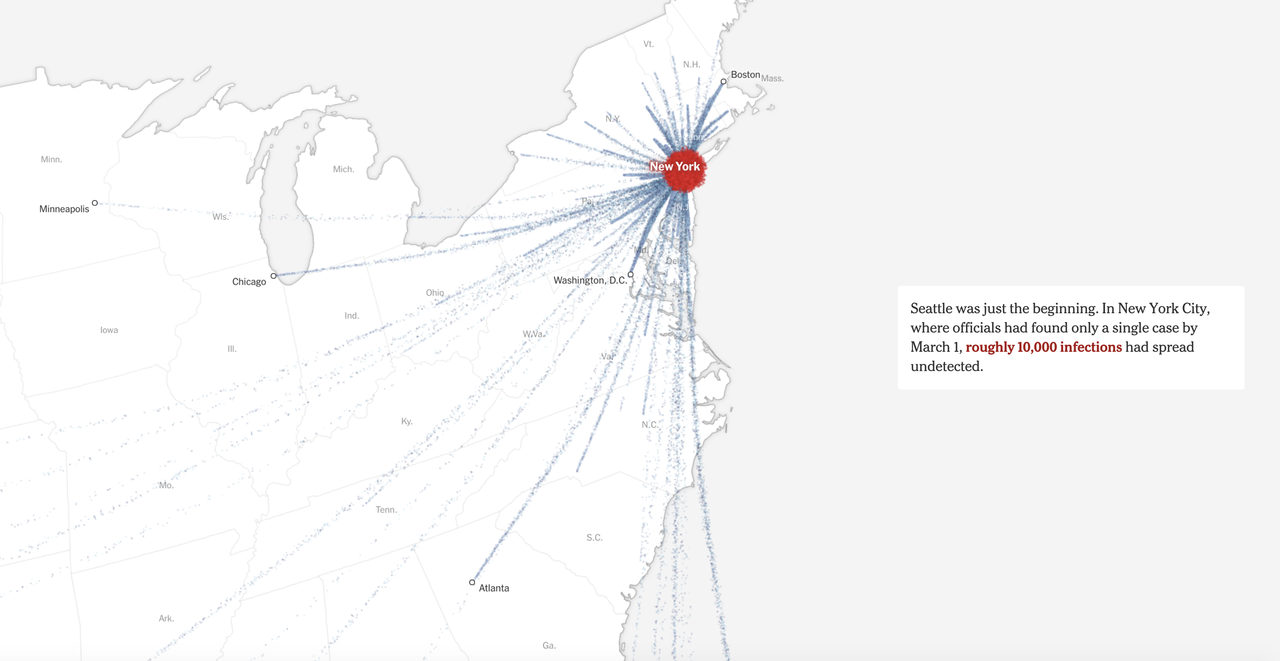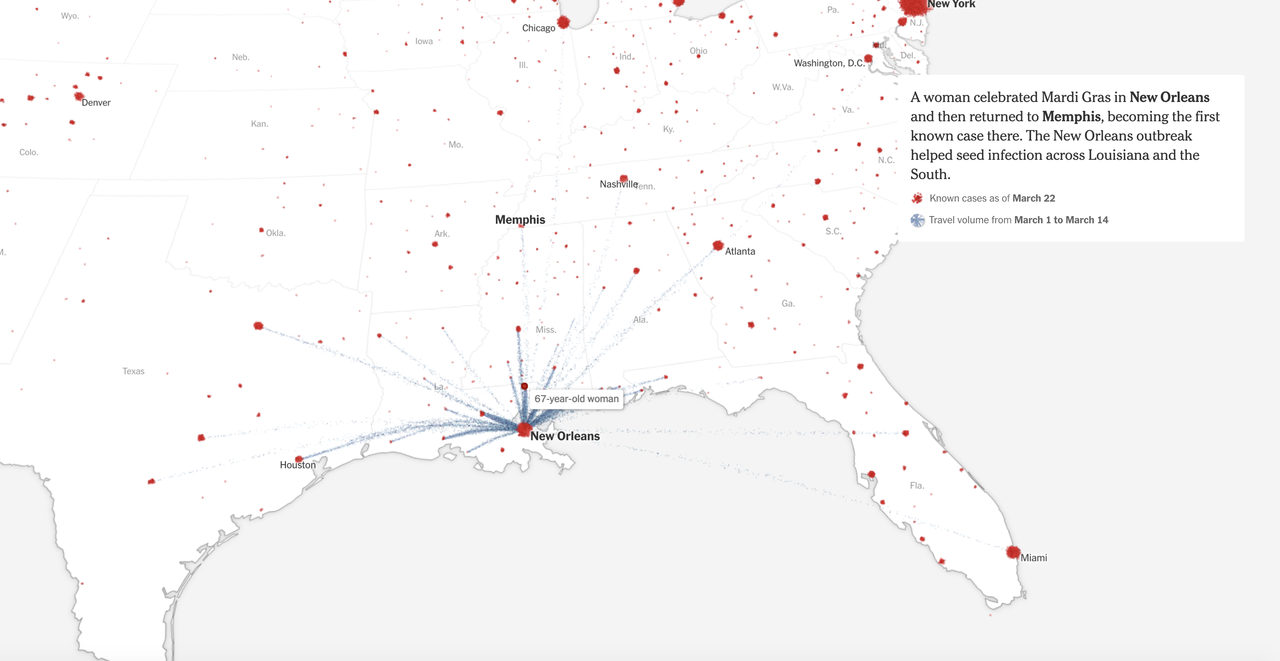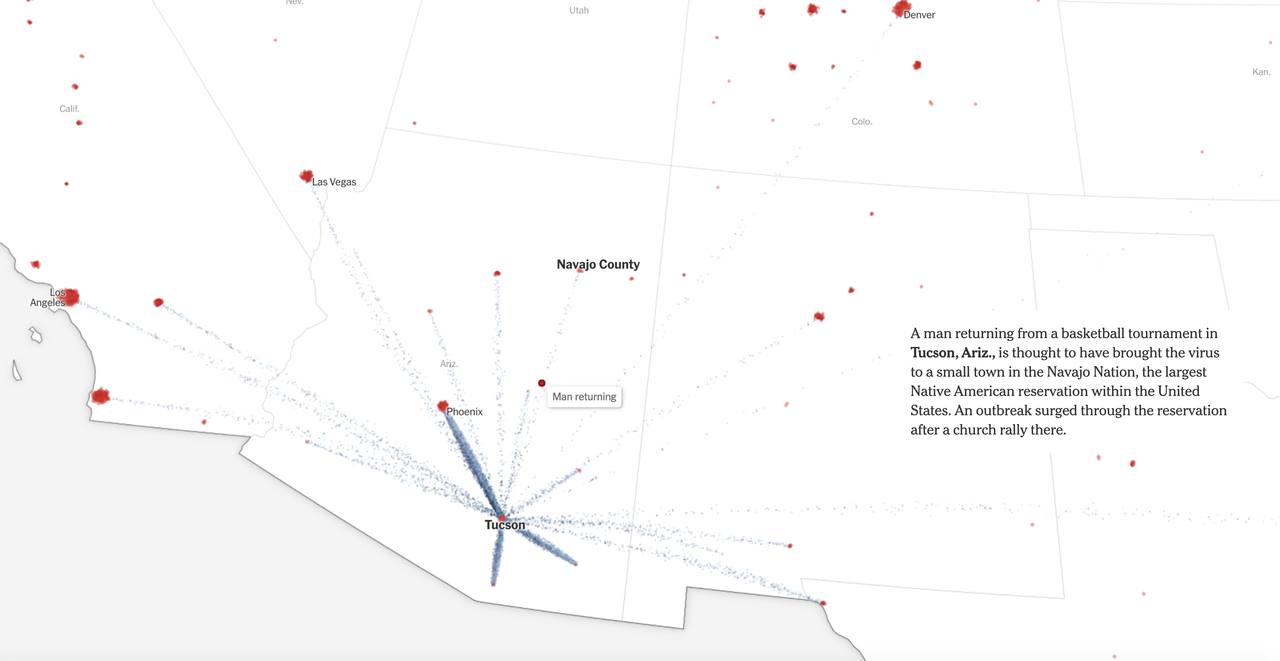This Map Shows How The Coronavirus Spread Across The US
Tyler Durden
Thu, 06/25/2020 – 20:50
Working with a team of researchers, the New York Times has put together a comprehensive map of how the coronavirus spread from China and Europe to the US that, ironically, helps to undermine some of the paper’s own criticisms of President Trump’s decision to close the borders to travelers from China, while confirming that the initial delays in testing caused by faulty CDC tests and what has been described as “bureaucratic arrogance” greatly contributed to the spread.
Still, the picture painted of the American response to the virus isn’t pretty. Again and again, the states just didn’t act quickly enough to stop the virus from taking root in their communities. Outside the northeast and California, most moved far too slow. And even those states just named didn’t act swiftly enough.
The NYT’s narrative starts in early February, as the first known cases arrived in Seattle and Chicago.
By mid-February, there were only 15 known coronavirus cases in the United States, all with direct links to China. It was around then that President Trump triumphantly declared that the 15 cases would soon fall back to zero.
The problem is, by mid-February, there were already thousands of infections spreading across the country.
Unfortunately, by this point, the American response was weeks behind, per the NYT, as it would take 8 more weeks for testing capacity to start ramping up, and 10 in total after that until most states achieved widespread availability for tests. Still, NYT acknowledges that the China travel ban was a “partial” success. The problem is it wasn’t enough, and Trump should have listened to several advisers who were urging him to close travel to the EU. By the time Trump imposed the restrictions on China Feb. 2, only a few cases had made it to the US. but the decision to let the EU off the hook was a mistake.
But by the end of February, the flow of infected travelers had turned into a wave, as more than 1,000 infected patients are believed to have arrived in the US by the end of February, each kicking off a mini-flareup of their own.
By March 1, the number of infections had doubled 4 times as the exponential rate of spread was in full swing.
As President Trump pressed his administration not to be too ‘alarmist’ about the outbreak, he continued to encourage Americans to go about their lives, and they did, spreading the virus across the country as millions continued to travel.
The first sign that the outbreak was badly out of control, and that “community spread” was already well under way, arrived in late February when the first patient who hadn’t traveled to China was identified as infected om Seattle. Infections from this first community spread case in Seattle eventually spread to 14 states.
By March 1, when NYC Mayor Bill de Blasio was encouraging New Yorkers to “go about their lives as normal”, there were already more than 1,000 infected people roaming around the city.
Then more than 5,000 contagious travelers had left the city by mid-March, when the ‘stay at home’ orders in the Bay Area were first handed down, inspiring the lockdowns. Traveling New Yorkers spread the virus as far as New Orleans, where that city’s outbreak, which kicked off the outbreak in Louisiana more broadly, was later tied back to NYC.
Tracking so called “signature” mutations in genetic material of viral strains isolated in sick patients has allowed scientists to assemble a rough timeline, while providing more evidence to help them trace the spread of the virus around the country. By the time Trump blocked travel from the EU by mid-March, the restrictions were mostly useless; the virus was already widespread in the US as the Louisiana outbreak helped seed infections across the South.
A man returning from a basketball tournament in Tucson Ariz introduced the virus to the Navajo Reservation, the largest in the country.
Cellphone location data shows Americans didn’t start to curtail their movements until around March 10.
For more, the rest of the NYT’s project can be found here.
via ZeroHedge News https://ift.tt/3eAWPtQ Tyler Durden
